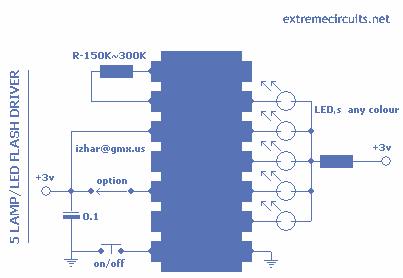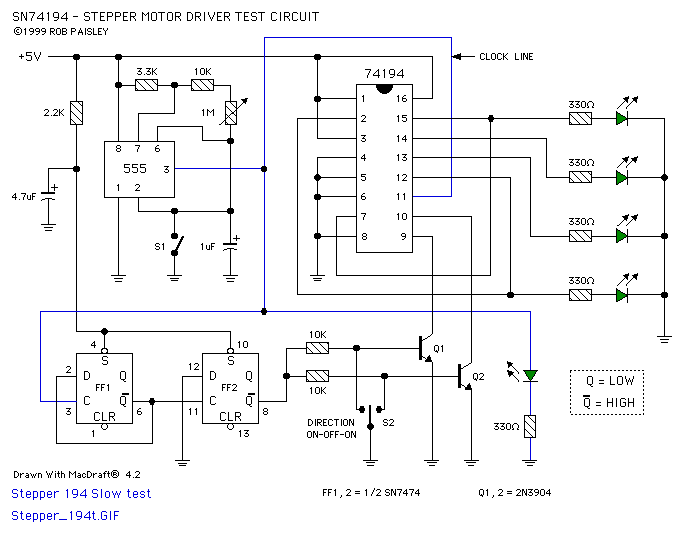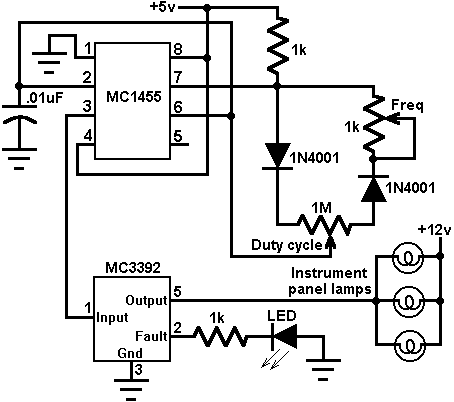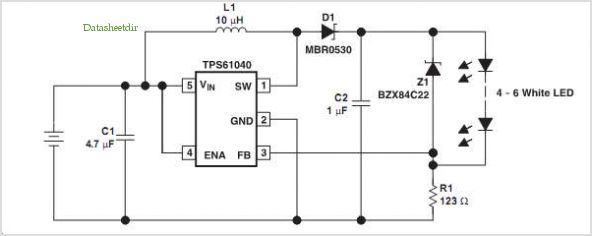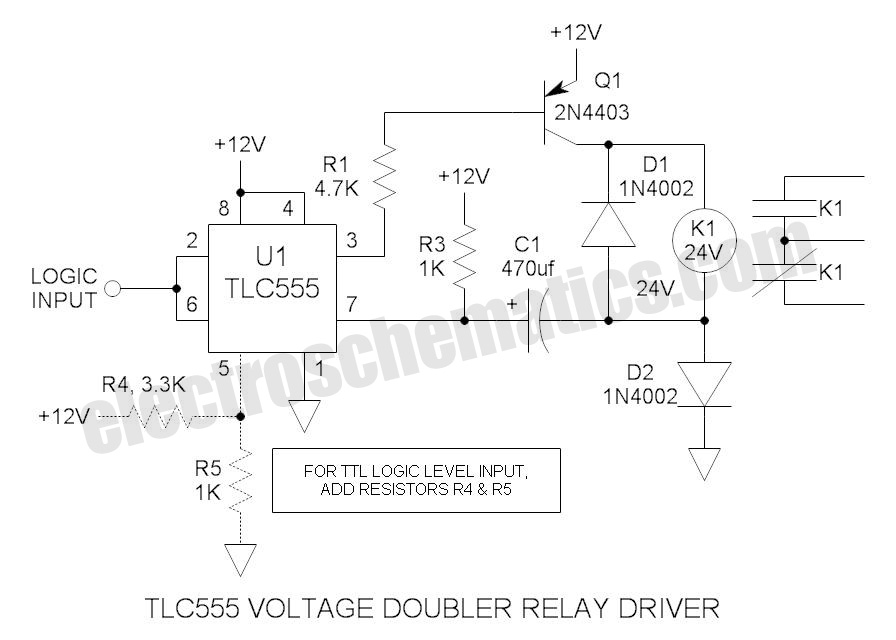
12VDC Fluorescent Lamp Driver
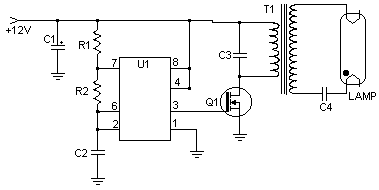
A number of people have been unable to find the transformer needed for the Black Light project, so I looked around to see if I could find a fluorescent lamp driver that does not require any special components. I finally found one in Electronics Now. Here it is. It uses a normal 120 to 6V stepdown transformer in reverse to step 12V to about 350V to drive a lamp without the need to warm the filaments. More: Q1 must be installed on a heat sink. A 240V to 10V transformer will work better than the one in the parts list. The problem is that they are hard to find. This circuit can give a nasty (but not too dangerous) shock. Be careful around the output.
The described circuit utilizes a standard transformer in a reverse configuration to create a high-voltage output suitable for driving a fluorescent lamp. The approach involves using a step-down transformer, typically rated for 120V to 6V, which is repurposed to step up a 12V input to approximately 350V. This method eliminates the need for filament preheating, which is common in conventional fluorescent lamp circuits.
Key components include a transformer, a switching device (Q1), and additional passive components to regulate the circuit's operation. The switching device, likely a transistor or MOSFET, must be mounted on a heat sink to dissipate heat generated during operation. This is crucial for maintaining the reliability and longevity of the component, as excessive heat can lead to failure.
The suggestion to use a 240V to 10V transformer is noted as a potentially better alternative, although availability may be an issue. This transformer would likely provide improved efficiency or performance characteristics compared to the standard transformer mentioned.
Safety precautions are emphasized due to the high voltage present in the circuit. The output can deliver a significant shock, which, while described as not overly dangerous, necessitates caution when handling the circuit. Proper insulation and protective measures should be implemented to ensure user safety during operation and maintenance.
Overall, this circuit design presents a viable solution for driving a fluorescent lamp in applications where conventional transformers are difficult to source, while also highlighting the importance of thermal management and safety considerations.A number of people have been unable to find the transformer needed for the Black Light project, so I looked around to see if I could find a fluorescent lamp driver that does not require any special components. I finally found one in Electronics Now. Here it is. It uses a normal 120 to 6V stepdown transformer in reverse to step 12V to about 350V to drive a lamp without the need to warm the filaments.
# Q1 must be installed on a heat sink. # A 240V to 10V transformer will work better then the one in the parts list. The problem is that they are hard to find. # This circuit can give a nasty (but not too dangerous) shock. Be careful around the outpu 🔗 External reference
The described circuit utilizes a standard transformer in a reverse configuration to create a high-voltage output suitable for driving a fluorescent lamp. The approach involves using a step-down transformer, typically rated for 120V to 6V, which is repurposed to step up a 12V input to approximately 350V. This method eliminates the need for filament preheating, which is common in conventional fluorescent lamp circuits.
Key components include a transformer, a switching device (Q1), and additional passive components to regulate the circuit's operation. The switching device, likely a transistor or MOSFET, must be mounted on a heat sink to dissipate heat generated during operation. This is crucial for maintaining the reliability and longevity of the component, as excessive heat can lead to failure.
The suggestion to use a 240V to 10V transformer is noted as a potentially better alternative, although availability may be an issue. This transformer would likely provide improved efficiency or performance characteristics compared to the standard transformer mentioned.
Safety precautions are emphasized due to the high voltage present in the circuit. The output can deliver a significant shock, which, while described as not overly dangerous, necessitates caution when handling the circuit. Proper insulation and protective measures should be implemented to ensure user safety during operation and maintenance.
Overall, this circuit design presents a viable solution for driving a fluorescent lamp in applications where conventional transformers are difficult to source, while also highlighting the importance of thermal management and safety considerations.A number of people have been unable to find the transformer needed for the Black Light project, so I looked around to see if I could find a fluorescent lamp driver that does not require any special components. I finally found one in Electronics Now. Here it is. It uses a normal 120 to 6V stepdown transformer in reverse to step 12V to about 350V to drive a lamp without the need to warm the filaments.
# Q1 must be installed on a heat sink. # A 240V to 10V transformer will work better then the one in the parts list. The problem is that they are hard to find. # This circuit can give a nasty (but not too dangerous) shock. Be careful around the outpu 🔗 External reference

